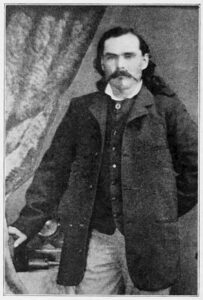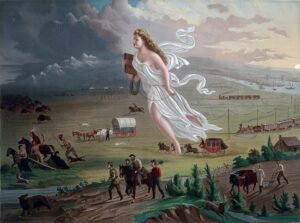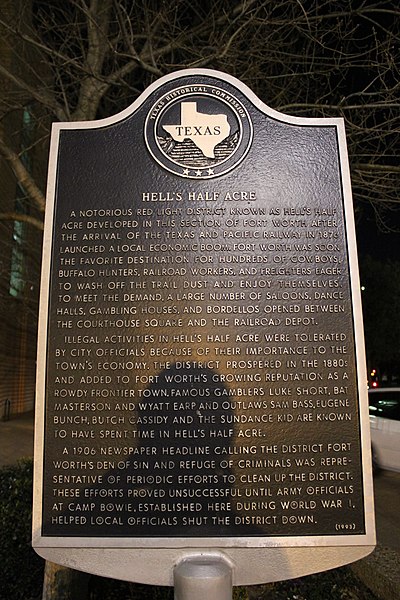
In the heart of Fort Worth, Texas, a place brimming with diverse cultures, vibrant life, and rich history, lies an area steeped in tales of the old Wild West – Hell’s Half Acre. Though it no longer stands today, its stories of resilience, lawlessness, and change continue to resonate, painting a vivid picture of Fort Worth’s past.
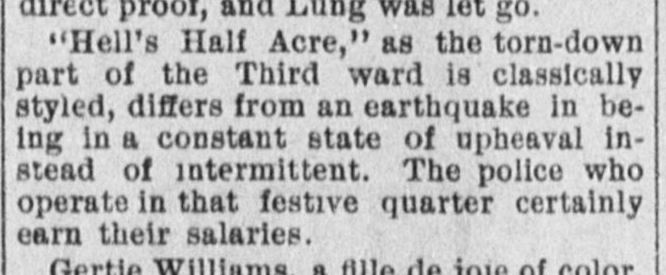
Hell’s Half Acre: A Walk Through History
Hell’s Half Acre, or simply “the Acre,” was a district in Fort Worth that spanned 2.5 acres in the latter part of the 19th century. Despite its rather menacing name, the Acre wasn’t always associated with the darker side of society. Originally, it began as a hub for cattle drivers, hosting an array of saloons, dance halls, and trading posts. it served as a communal gathering space where people could unwind, exchange stories, and revel in the camaraderie of frontier life.
However, as Fort Worth grew into a bustling city, the Acre evolved, too, quickly becoming infamous as a haven for gamblers, outlaws, and vigilantes. Its reputation reached a point where even the legendary Doc Holliday, Wyatt Earp’s trusted companion, was said to frequent its establishments.
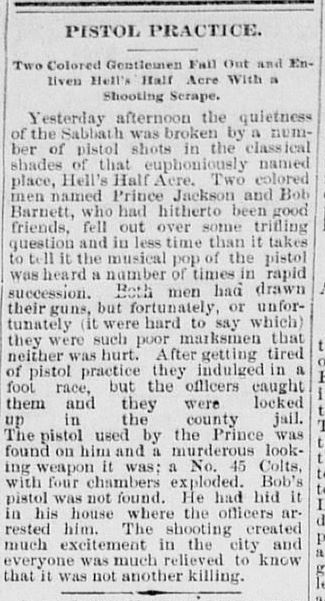
Walking through “the Acre”
Stepping into Hell’s Half Acre in its heyday would be like walking straight into a scene from a classic Wild West film. As you stepped onto the dusty roads, you might first notice the rambunctious drovers, cowboys, soldiers, gamblers, and sometimes even outlaws. The air would be thick with the stench of livestock, the dust from the roads, and the mingling aromas of strong spirits and food from various eateries.
The soundscape would be a cacophony of jingling spurs, raucous laughter, music from dance halls, the neighing of horses, and the occasional gunshot. Saloons would be filled with boisterous patrons, with lively music and laughter spilling out onto the streets.
Along the streets, there would be an array of establishments, from gambling dens, dance halls, and saloons, to bawdy houses. The buildings would be largely functional, wooden or brick, with a few more elaborate structures advertising their higher-end services.
At night, the area would come alive in a different way. Lanterns would light up the fronts of establishments, casting long shadows and creating an atmosphere of grit and anticipation. The nights would be long and filled with indulgences as visitors and locals alike sought out the vices that the Acre had to offer.
Despite its notoriety, Hell’s Half Acre was also a place of camaraderie and frontier spirit, a place where people from all walks of life intermingled. Walking through it would be like navigating the wild, untamed heartbeat of Fort Worth, an exhilarating and daunting experience.
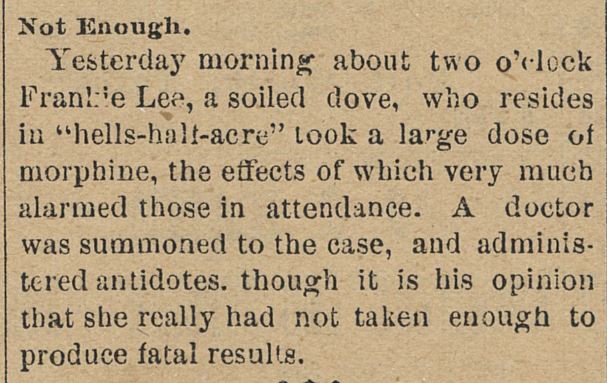
Fall of the District
Throughout the late 1800s, the Acre saw both prosperity and peril. As the city’s entertainment district, it contributed significantly to Fort Worth’s economy. Yet, its lawless nature eventually led to its downfall.
As the 19th century came to a close, the lawless reputation of Hell’s Half Acre began to increasingly clash with Fort Worth’s ambitions to be seen as a progressive and respectable city. Local law enforcement and moral crusaders initiated efforts to clean up the district. By the turn of the 20th century, the community was no longer tolerating the open vice and lawlessness that had become synonymous with the Acre.
The final blow to the Acre was dealt by Luke Short, one of Fort Worth’s most colorful figures and owner of the elegant White Elephant Saloon. Short and other business owners moved their operations to the more respectable part of town. This exodus signified the Acre’s decline from a vibrant hub of activity to a den of iniquity.
Today, traces of Hell’s Half Acre can be found scattered throughout modern Fort Worth. The district may no longer exist as it once did, but its spirit lives on in the vibrant, multicultural city that Fort Worth has become.

Conclusion
Hell’s Half Acre remains an essential chapter in Fort Worth’s history, serving as a testament to the city’s evolution. From a humble pit stop for cattle drivers to a district of infamy and, subsequently, to the heart of a thriving, cosmopolitan city, the story of Hell’s Half Acre is indeed the story of Fort Worth itself.
This tale of transformation, resilience, and revival is what makes Fort Worth a city worth exploring and understanding, for its past shapes its present, just as Hell’s Half Acre helped shape the city we know and love today.
Keywords: Hell’s Half Acre, Fort Worth, Texas history, Wild West, Doc Holliday, cattle drivers, transformation, lawless district, 19th century, city evolution.
